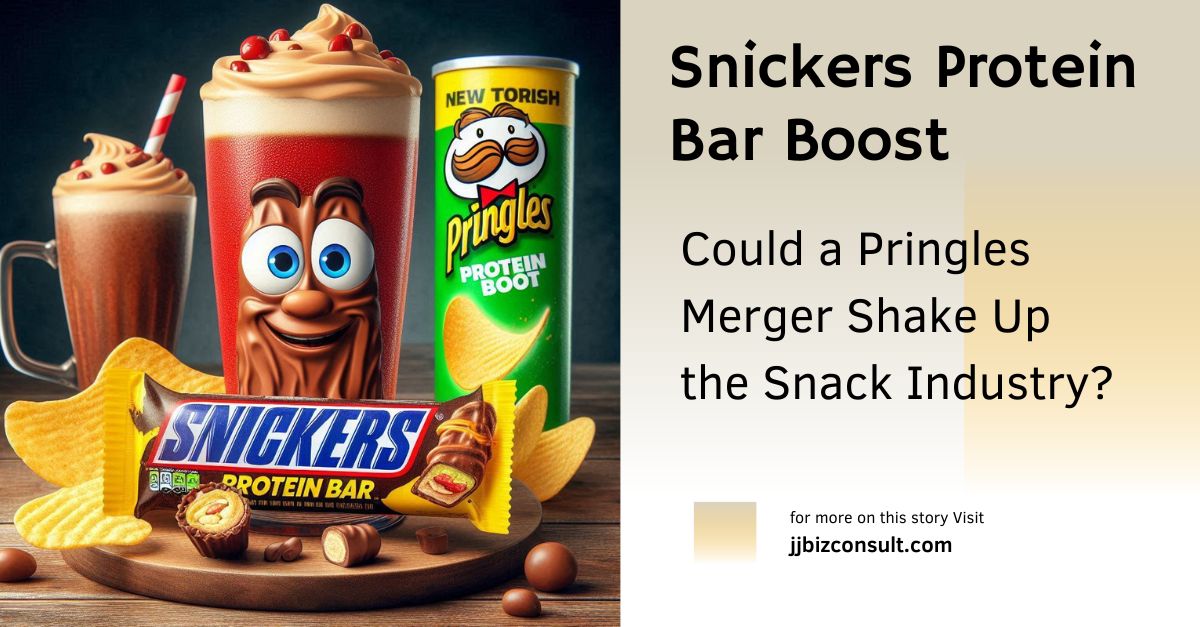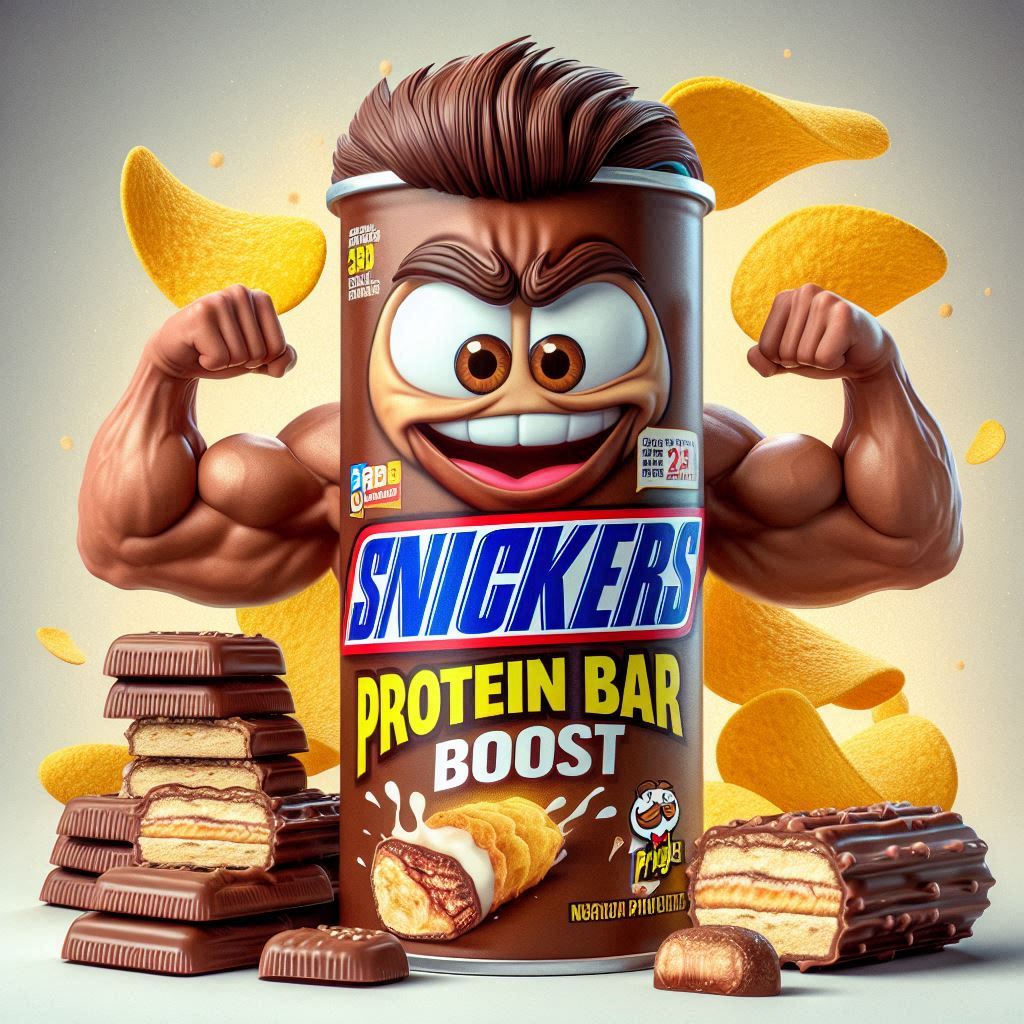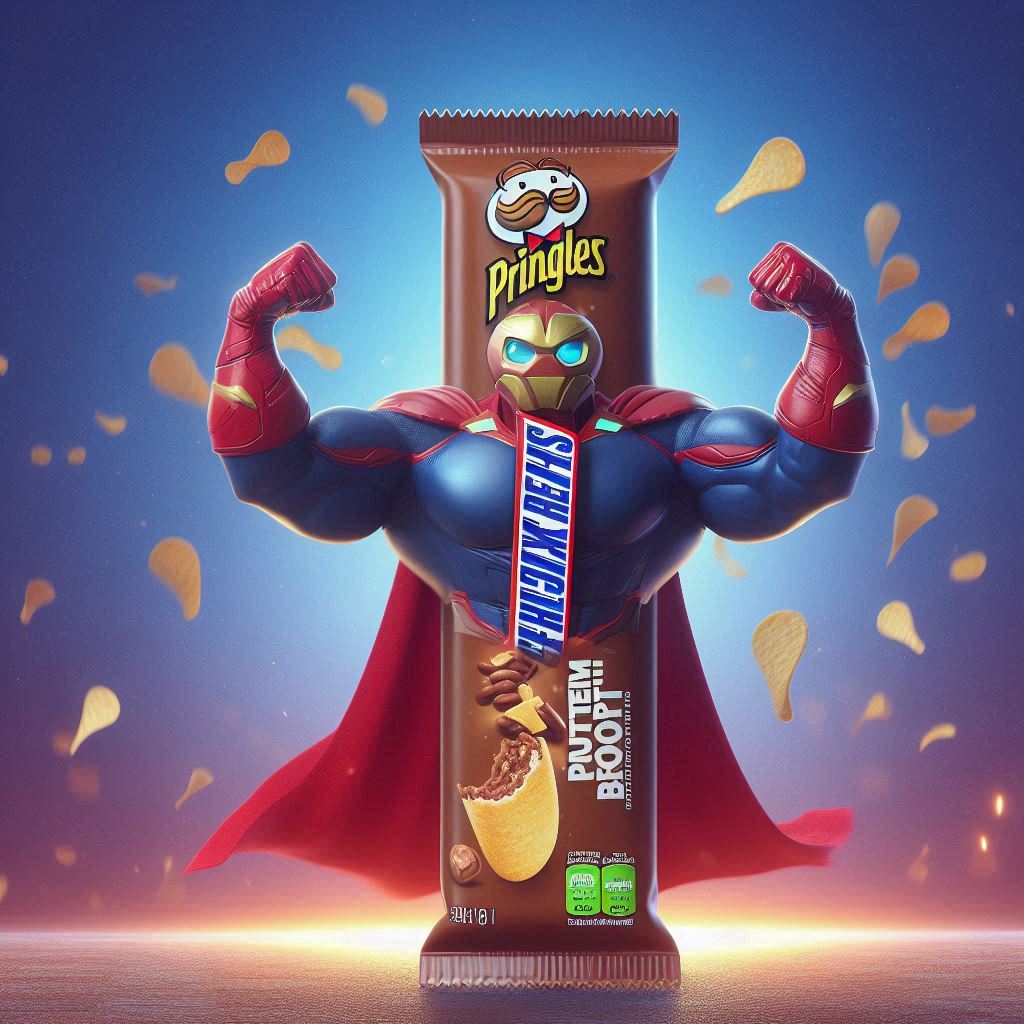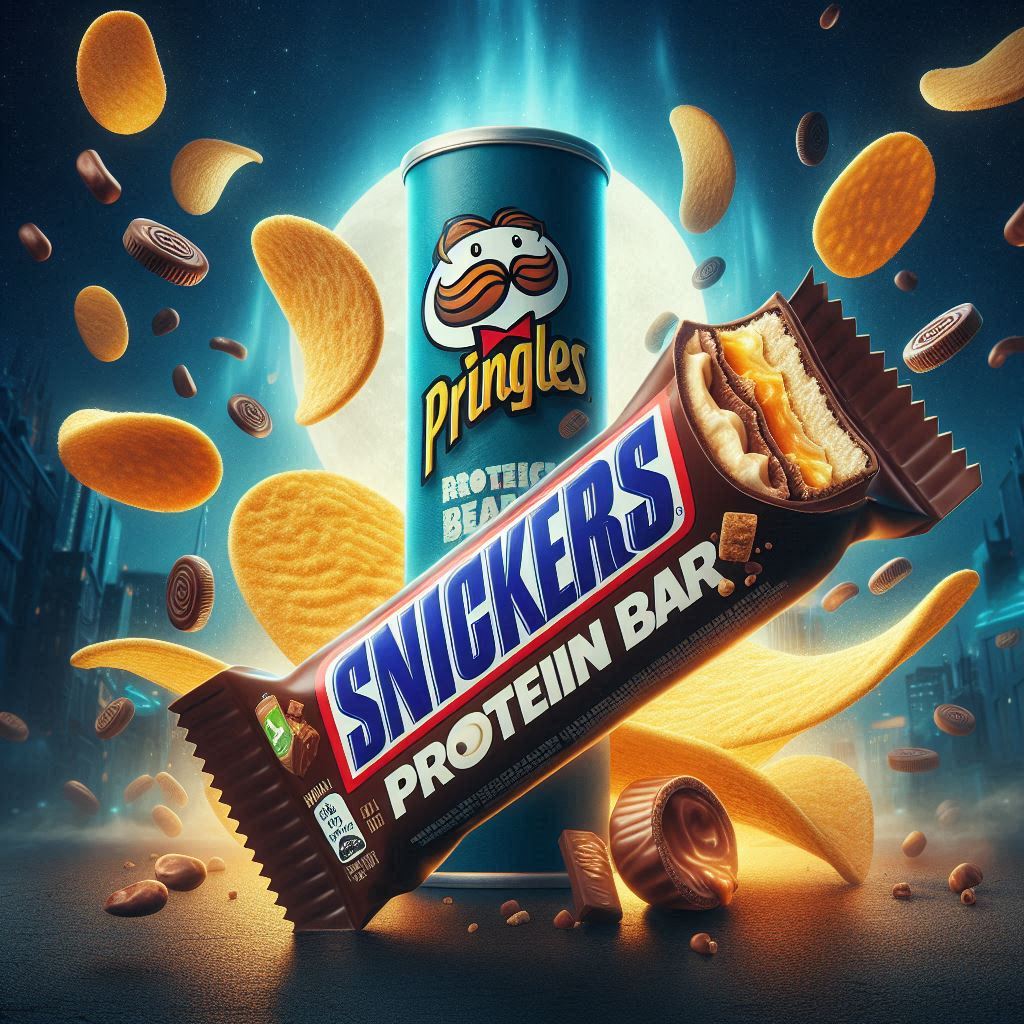
Snickers Protein Bar Boost: Could a Pringles Merger Shake Up the Snack Industry?
Snickers Protein Bar Boost: The snack food industry is poised for a seismic shift as confectionery giant Mars reportedly eyes a potential acquisition of Kellanova, the parent company of Pringles. This blockbuster deal could reshape the global snack landscape and create a formidable competitor.
The Potential Merger: A Game-Changer
News of a possible Mars-Kellanova merger sent shockwaves through the market, with Kellanova‘s stock soaring over 13% on the announcement. The deal, if finalized, would mark one of the largest acquisitions in the food industry this year, valuing Kellanova at an estimated $30 billion.
While the deal is still in the negotiation phase, the potential implications are far-reaching. Mars, already a dominant force in confectionery with brands like Snickers, M&M’s, and Dove, would significantly expand its footprint in the snack food category. By acquiring Kellanova, Mars would gain ownership of iconic brands such as Pringles, Cheez-It, Pop Tarts, and Rice Krispies Treats, creating a powerhouse portfolio capable of competing with industry giants like PepsiCo and Mondelez International.
Snickers Protein Bar: A Catalyst for Growth

Mars‘ successful Snickers Protein Bar has been a key driver of its growth. The merger with Kellanova could provide an opportunity to leverage the Snickers brand further by introducing protein-packed snacks under the Kellanova umbrella. This could include protein-infused Pringles or other innovative products that cater to health-conscious consumers.
Kellanova‘s Quest for Growth
The potential acquisition comes as Kellanova grapples with slowing sales and challenges in international markets. Despite the overall decline, the company’s flagship brand, Pringles, has been a bright spot, contributing to offsetting the negative impact. To further drive growth, Kellanova is planning a major launch of Cheez-It in Europe, backed by a robust marketing campaign.
A Bidding War?
Given the attractiveness of Kellanova’s portfolio, it’s no surprise that other industry players are circling. Both Mondelez International (owner of Oreo) and Hershey’s are reportedly considering their own bids for the company. This potential bidding war could drive up the price and intensify competition in the snack food sector.
Industry Implications
A Mars-Kellanova merger would have profound implications for the snack food industry. It could lead to increased consolidation, higher prices for consumers, and a reshuffling of market share. Additionally, the deal could spark a wave of mergers and acquisitions as other companies seek to bolster their positions in the competitive landscape.
As the situation unfolds, industry watchers will be closely monitoring the developments. The outcome of these negotiations could redefine the snack food industry for years to come.
The Intensifying Snack Food Battle: A Look at the Competitive Landscape

The potential merger between Mars and Kellanova is set to dramatically alter the competitive landscape of the snack food industry. A combined entity would create a formidable force capable of challenging the dominance of existing industry giants.
Key Competitors
PepsiCo: As the owner of Frito-Lay, PepsiCo is the undisputed leader in the salty snack category. With brands like Lay’s, Doritos, and Cheetos, it holds a significant market share. While PepsiCo also owns Quaker Oats, its focus on the beverage sector might give the combined Mars-Kellanova entity an edge in the snack food segment.
Mondelez International: A direct competitor to both Mars and Kellanova, Mondelez boasts a strong portfolio of snack brands including Oreo, Cadbury, and Ritz. Their global presence and diverse product range make them a formidable opponent.
Nestle: Though primarily known for its dairy and infant nutrition products, Nestle also has a substantial presence in the snack food market with brands like KitKat and Nesquik. They could emerge as a potential challenger if they decide to expand their snack food portfolio.
Competitive Advantages and Challenges
A combined Mars-Kellanova entity would benefit from several competitive advantages:
- Diversified Portfolio: The merger would create a company with a broad product range, covering both sweet and salty snacks. This diversification can help mitigate risks associated with fluctuations in consumer preferences.
- Global Reach: Mars and Kellanova have strong international presences, which would be amplified through a merger. This expanded reach can help capture new markets and increase revenue.
- Strong Brand Equity: Both companies own iconic brands with strong consumer loyalty. A combined portfolio of brands could create significant synergies and increase market share.
However, the combined entity would also face challenges:
- Integration Difficulties: Merging two large companies can be complex and time-consuming. Integrating operations, supply chains, and workforces can be challenging.
- Regulatory Hurdles: Antitrust regulations could pose significant hurdles to the merger. The combined entity might need to divest certain brands or businesses to gain regulatory approval.
- Consumer Preferences: The snack food industry is highly dynamic, with consumer tastes and preferences constantly evolving. The combined entity must stay agile and adapt to changing trends to maintain its competitive edge.
The Road Ahead
The snack food industry is undergoing rapid transformation, driven by factors such as changing consumer demographics, health and wellness trends, and the rise of e-commerce. The potential merger between Mars and Kellanova is just one piece of this complex puzzle.
To succeed in this dynamic environment, companies must focus on innovation, product development, and building strong consumer relationships. The combined entity, if formed, will need to leverage its strengths to create a sustainable competitive advantage and navigate the challenges of the evolving snack food landscape.
Strategies for a Competitive Edge: A Combined Mars-Kellanova

A successful merger between Mars and Kellanova requires strategic planning to maximize its competitive advantage. Here are some potential strategies:
Leverage Brand Synergies
- Cross-promotion: Create joint marketing campaigns featuring complementary products, such as Snickers Protein Bar and Pringles or M&M’s and Cheez-It.
- Product innovation: Develop new products that combine elements of both companies’ brands, for example, a Snickers-flavored Pringles or a Cheez-It-filled chocolate bar.
- Brand extensions: Expand existing brands into new product categories to capitalize on brand recognition.
Global Expansion and Market Penetration
- Emerging markets: Focus on expanding into high-growth markets, such as India, China, and Brazil, where consumer spending on snacks is increasing.
- Local adaptation: Tailor products and marketing strategies to suit local tastes and preferences to increase market penetration.
- Distribution networks: Optimize distribution channels to ensure wider availability of products and strengthen market presence.
Innovation and Product Development
- Consumer research: Invest in market research to understand evolving consumer preferences and identify new product opportunities.
- Research and development: Allocate resources to develop innovative products that meet changing consumer demands, such as healthier options or premium products.
- Open innovation: Collaborate with startups and external partners to bring new ideas to market.
Supply Chain Optimization
- Cost reduction: Streamline operations and reduce costs through economies of scale and supply chain efficiencies.
- Sustainability: Implement sustainable practices to reduce environmental impact and enhance brand reputation.
- Risk management: Develop robust supply chain strategies to mitigate risks such as supply disruptions and price fluctuations.
Digital Transformation
- E-commerce: Strengthen online presence and expand e-commerce channels to reach a wider customer base.
- Data analytics: Utilize data analytics to gain insights into consumer behavior and optimize marketing efforts.
- Digital marketing: Invest in digital marketing channels to engage with consumers and build brand loyalty.
By implementing these strategies, a combined Mars-Kellanova can position itself as a dominant force in the snack food industry, driving growth and profitability.
How might consumers be affected by this acquisition?
The potential acquisition of Kellanova by Mars could impact consumers in several ways:
- Product Availability and Variety:
- Consumers may see changes in product availability and variety. Mars could introduce new snack options or cross-promote existing brands.
- Pringles, Cheez-It, and other Kellanova products might benefit from Mars’ distribution channels, reaching more consumers globally.
- Pricing and Promotions:
- Pricing dynamics may shift. Mars could adjust prices based on its strategy and market positioning.
- Promotions, discounts, and bundle deals might change as the merged entity optimizes marketing efforts.
- Innovation and Health Trends:
- Mars’ focus on health-conscious products (like Snickers Protein Bar) could influence Kellanova’s offerings.
- Expect innovations like protein-infused Pringles or healthier snack alternatives.
- Quality and Brand Reputation:
- Consumers associate brands with quality. Mars’ reputation could enhance Kellanova’s image.
- However, any missteps (e.g., quality issues) could impact consumer trust.
- Competition and Market Share:
- A stronger Mars-Kellanova entity may compete more aggressively with other snack giants.
- Consumers benefit from competitive pricing and innovation.
Remember, these are potential effects, and the actual impact will depend on how the merger unfolds. 🌟🍫🥨
Kellanova: Focus on The Reason Why Is Kellogg’s Rebranding
Hotel Chocolat to be bought by Mars for $662m





